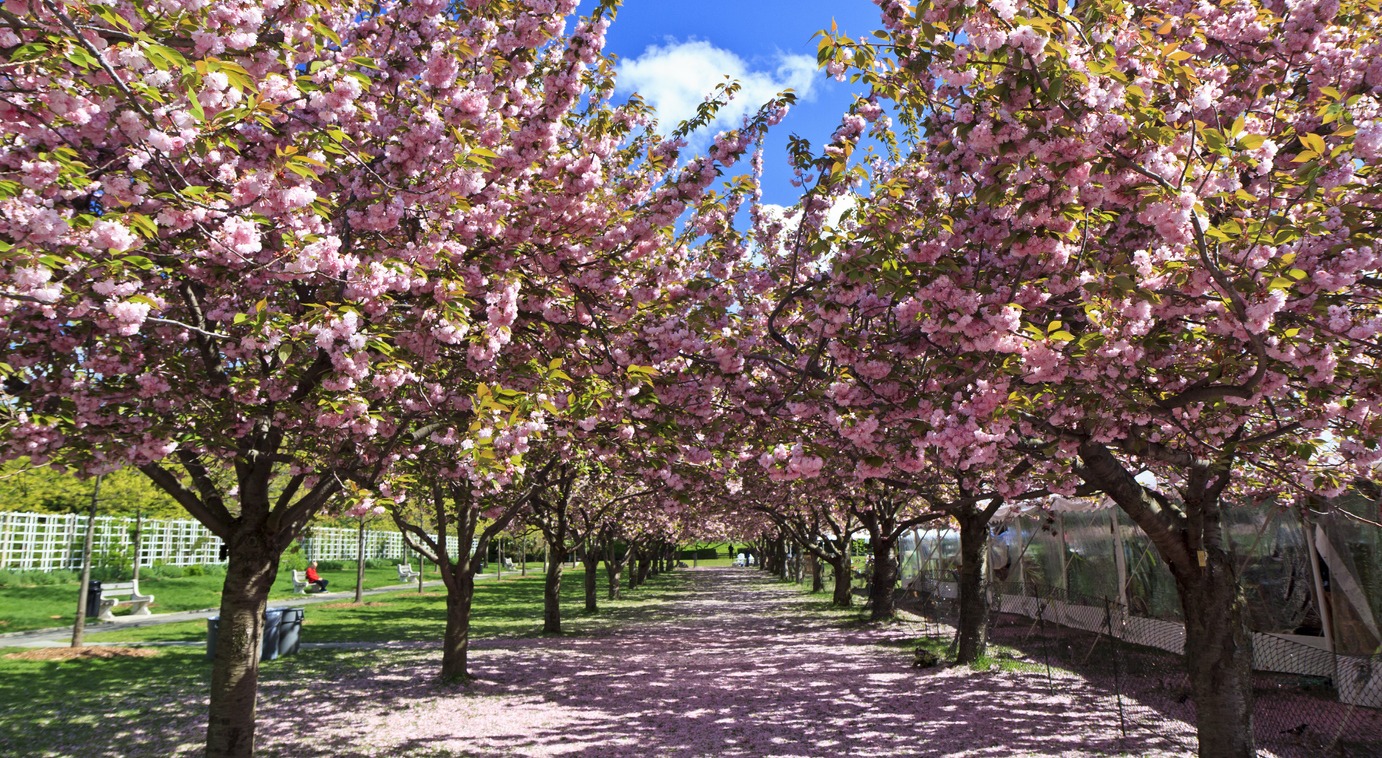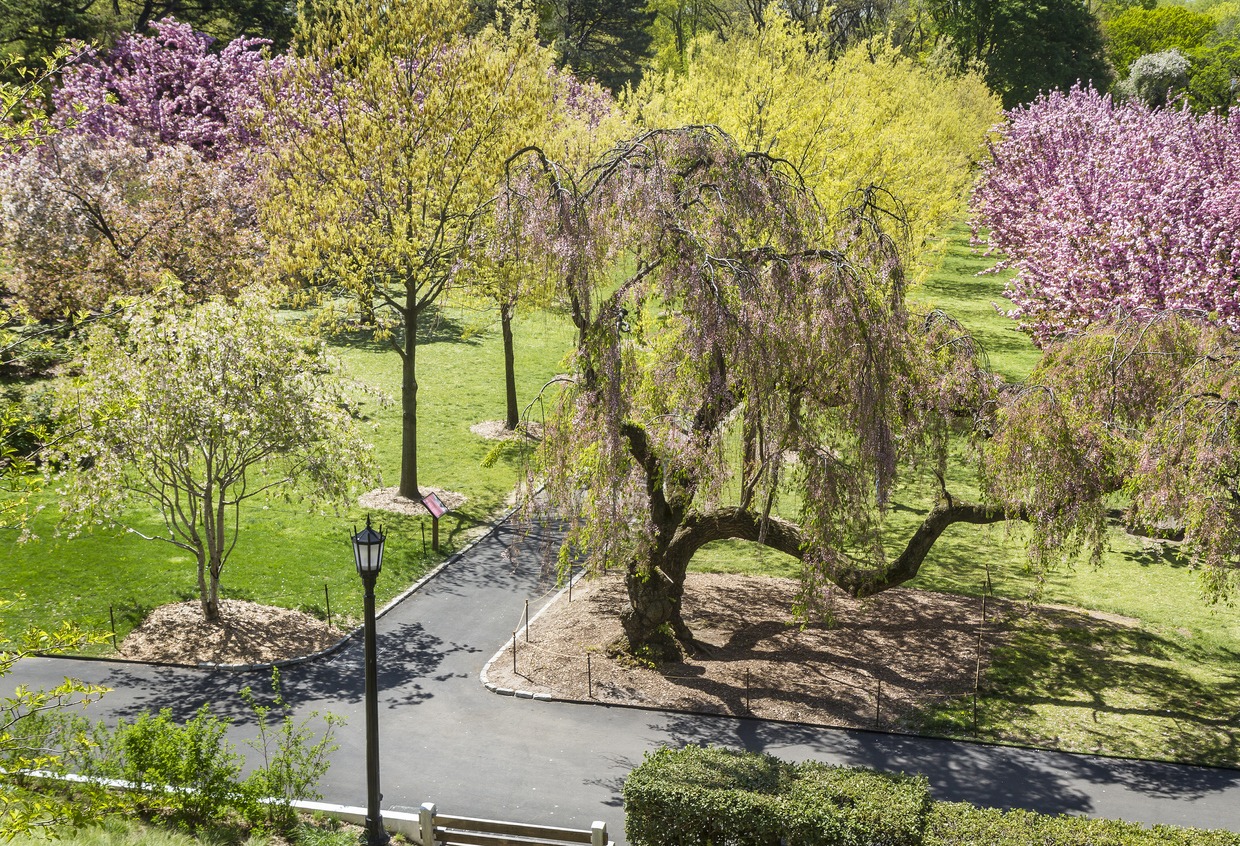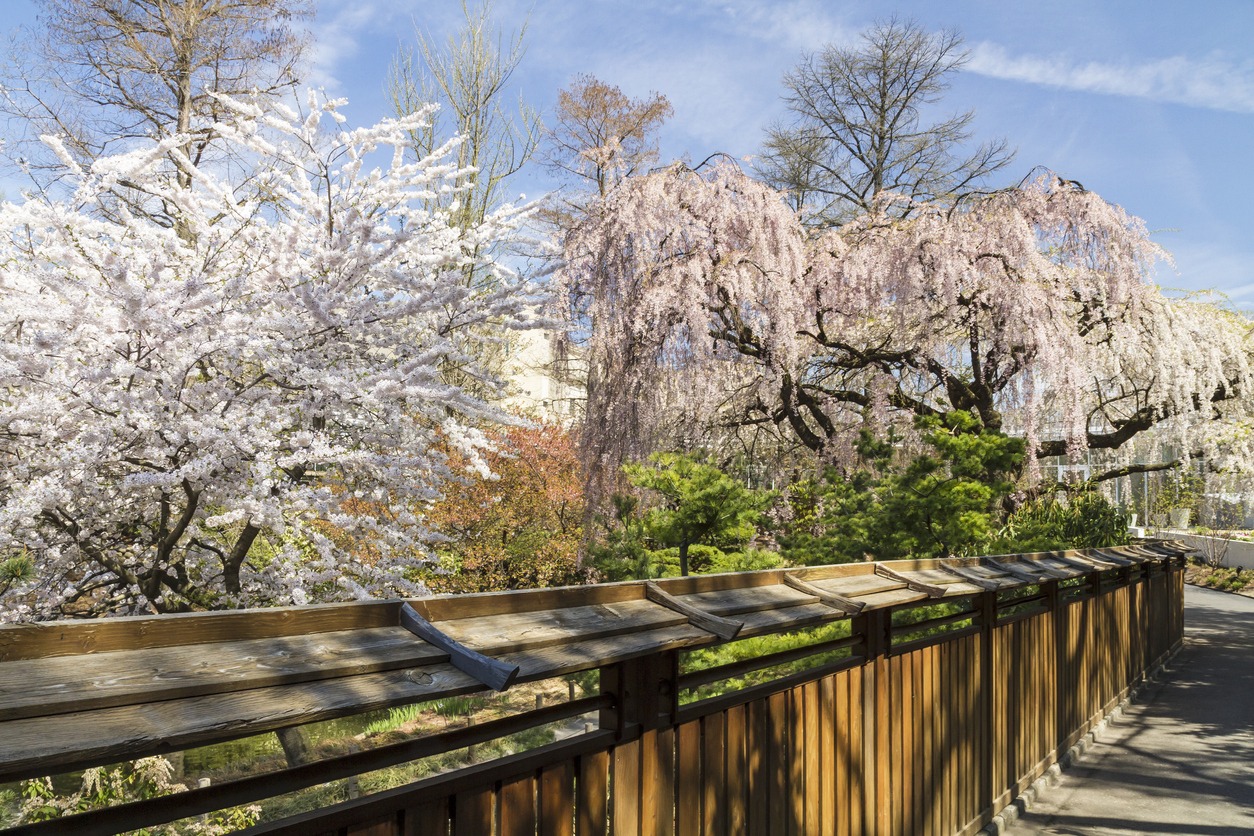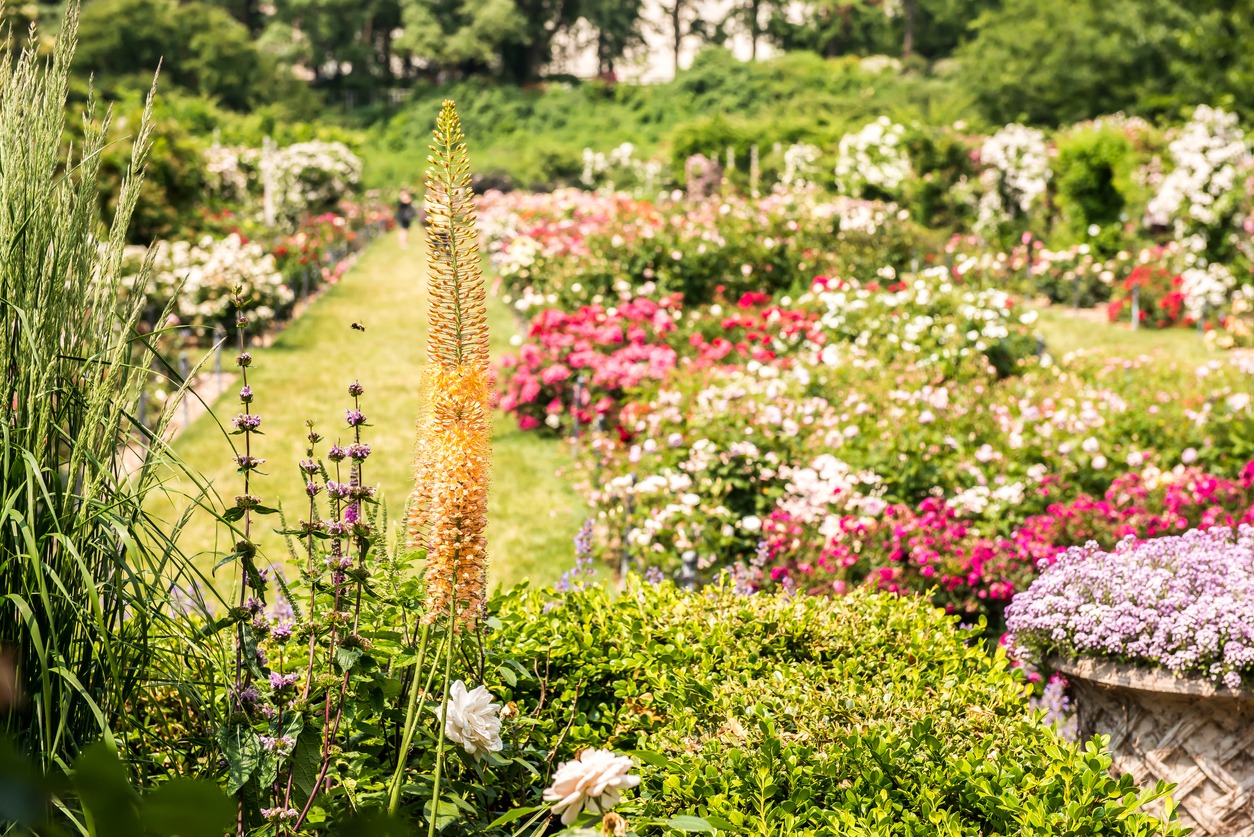Nestled in the bustling urban landscape of New York City lies a tranquil oasis known as the Brooklyn Botanic Garden. This verdant paradise celebrates the harmonious relationship between nature and urbanity. Among the myriad of attractions and seasonal spectacles it offers, the Cherry Blossom Festival, or Sakura Matsuri, stands out as a crowning jewel, drawing visitors from all corners of the globe. This enchanting festival not only showcases the fleeting beauty of cherry blossoms but also immerses attendees in a cultural experience that is both deeply traditional and refreshingly contemporary. As spring unfurls its colors, the Brooklyn Botanic Garden transforms into a botanic wonderland, inviting everyone to partake in the joyous celebration of renewal, beauty, and community spirit. This article takes you on a journey through the winding paths of this urban botanical marvel, delving into the history, splendor, and cultural significance of the Brooklyn Botanic Garden and its famous Cherry Blossom Festival.
The Start of Brooklyn Botanic Garden
The history of the Brooklyn Botanic Garden is a captivating tale of community foresight, dedication to conservation, and a deep-rooted appreciation for the natural world. At the dawn of the 20th century, as Brooklyn rapidly industrialized and expanded, city planners recognized the need for green spaces that would offer residents respite from urban life and preserve the natural beauty rapidly disappearing under the spread of buildings and pavement. This vision led to the establishment of the Brooklyn Botanic Garden in 1910, an endeavor that transformed 39 acres of land destined for a city storage yard into a flourishing botanic garden. The garden was initially part of a larger public park project, led by the renowned landscape architect Frederick Law Olmsted, best known for designing Central Park. Charles Stuart Gager, the first director of the Brooklyn Botanic Garden, was pivotal in shaping its early development. Under his guidance, the garden quickly grew in size and scope, integrating new plant species and garden designs to reflect both local and exotic flora.
As the 20th century progressed, the Brooklyn Botanic Garden became a symbol of the conservationist movement, a physical representation of the community’s desire to preserve natural beauty and biodiversity amidst urban growth. It was not just a place to admire exotic plants but also a sanctuary where people could learn about botany and the importance of conservation. Established in the early years, the garden’s herbarium became a vital resource for botanical research, housing an extensive collection of plant specimens worldwide. Significant expansions and additions were made over the years, including the establishment of the Japanese Hill-and-Pond Garden in 1915, the first of its kind in an American public garden. This garden was designed by landscape architect Takeo Shiota, born in a small village near Tokyo, who imbued the space with a sense of peace and harmony that reflected the aesthetic principles of Japanese garden design.
The 1920s saw the addition of the Children’s Garden, which pioneered garden education for urban youth, teaching city children about the origins of their food and the importance of plants in their daily lives. The garden’s educational programs continued to expand, emphasizing environmental stewardship and sustainable horticulture. Throughout the 20th century and into the 21st, the Brooklyn Botanic Garden has continually adapted and expanded its mission and programs, reflecting the evolving understanding of ecological and environmental issues. It has grown to include a Native Flora Garden, first established in 1911 and expanded in 2013, emphasizing the importance of local plant species and their role in regional biodiversity.
Today, the Brooklyn Botanic Garden stands as a testament to the enduring value of nature in urban environments. It is not only a place of beauty and respite but also a dynamic institution at the forefront of botanical research, conservation, and education. As the garden continues to evolve, it remains a beloved community treasure and a vital advocate for the importance of plant life in our increasingly urban world.
Brooklyn’s Cherry Blossom Festival
Sakura Matsuri, or the Cherry Blossom Festival, is a much-anticipated event at the Brooklyn Botanic Garden that celebrates the fleeting beauty of cherry blossoms and the cultural traditions surrounding them. The festival is inspired by the Japanese custom of Hanami, which involves gathering under blooming cherry trees to enjoy their beauty and contemplate the transient nature of life. The garden becomes a bustling hub of cultural exchange and celebration as the cherry trees erupt in a canopy of pink and white.
The festival is a feast for the senses, featuring a wide array of Japanese cultural activities and performances that attract visitors of all ages and backgrounds. Here are some of the activities performed during the Cherry Blossom festival:
- Art and craftsmanship are also central to Sakura Matsuri. Art exhibitions showcase works inspired by cherry blossoms and Japanese culture, ranging from delicate paintings and sculptures to contemporary installations.
- Artisans demonstrate traditional crafts, allowing visitors to observe and sometimes participate in creating items like origami, calligraphy, and ikebana (the art of flower arranging).
- Taiko drumming, with its thunderous rhythms and energetic choreography, captivates audiences and echoes through the garden.
- Traditional tea ceremonies are conducted, offering a tranquil and contemplative experience amidst the floral splendor. The delicate art of tea preparation and serving provides a moment of calm and appreciation for the simpler aspects of life.
- Martial arts demonstrations, including judo, kendo, and aikido, showcase the discipline and skill inherent in these ancient practices.
- Dance performances, from classical to modern interpretations, celebrate the joy and vibrancy of Japanese culture.
Moreover, the cherry blossoms, known as Sakura in Japanese, are deeply symbolic. Their brief but brilliant blooming period is a reminder of the transient nature of life, a theme deeply embedded in Japanese art and philosophy. This aspect of the festival encourages reflection and appreciation for the moment, as the blossoms’ peak beauty lasts only a short while before they fall. Each year, as the Sakura Matsuri draws near, anticipation builds for the moment the cherry trees will fully bloom. The timing of the blossoms varies slightly each year, adding to the sense of ephemeral beauty and excitement surrounding the event. When the blossoms open, the garden transforms into a magical landscape, a sea of pink and white against the urban backdrop of New York City.
Brooklyn Botanic Wonderland’s Cultural Significance
The Brooklyn Botanic Garden, with its annual Cherry Blossom Festival, stands as a vibrant cultural nexus, intertwining the urban fabric of New York with the delicate nuances of Japanese tradition. The cherry blossoms, or Sakura, are more than just a botanical marvel; they are a symbol of life’s ephemeral beauty, echoing themes of impermanence that resonate deeply in Japanese culture and increasingly in the global consciousness. As the Sakura trees bloom, they herald not just the arrival of spring but also a period of reflection and community rejoicing. The festival, Sakura Matsuri, extends beyond the celebration of these fleeting blossoms to encapsulate a broader appreciation of Japanese culture, from the quiet dignity of the tea ceremony to the exhilarating beats of Taiko drums. In doing so, the Brooklyn Botanic Garden serves not only as a sanctuary of nature’s splendor but also as a dynamic venue for cultural exchange and understanding, bridging continents and communities with the universal language of nature’s transient beauty. Each year, as petals dance in the spring breeze, the Garden reaffirms its role as a cultural touchstone, inviting all to partake in a cherished celebration deeply woven with significance, beauty, and shared human experience.
The Botanic Garden’s Journey in Conservation and Education
The Brooklyn Botanic Garden is deeply committed to conservation and education, recognizing its vital role as a green sanctuary amidst the urban sprawl. It stands not only as a place of beauty but also as an active proponent of environmental stewardship, sustainable practices, and botanical education. The Garden’s multifaceted initiatives are aimed at preserving biodiversity and inspiring the community to engage with the natural world.
1. Conservation Efforts: The commitment to plant conservation is at the heart of the Garden’s mission. The Garden works to preserve rare and endangered species through seed banking, habitat restoration, and participation in global conservation networks. It actively contributes to research in botany and horticulture, seeking ways to protect plant diversity and promote ecological health. The Garden’s living collections, including rare and endangered plants, are carefully curated and maintained to serve as a genetic reservoir for future restoration and research efforts.
2. Sustainable Gardening: Sustainable gardening is another cornerstone of the Garden’s ethos. It employs environmentally friendly and resource-efficient practices, serving as a model for home gardeners and professionals alike. This includes composting organic waste, using natural pest control methods, and practicing water conservation techniques. The Garden also demonstrates the use of native plants in landscaping, which supports local wildlife and reduces the need for intensive maintenance.
3. Educational Programs: Education is a critical component of the Garden’s mission, with programs designed to engage visitors of all ages. The Garden offers a wide range of workshops, courses, and tours that delve into topics such as plant science, gardening, art, and nature conservation. For children and families, there are hands-on activities and classes that encourage young people to explore the natural world and understand the importance of plants and ecosystems.
4. Community Engagement: The Brooklyn Botanic Garden is deeply rooted in its community and offers programs specifically designed to involve local residents and address urban environmental issues. This includes urban gardening initiatives that empower residents to grow their own food and beautify their neighborhoods, fostering a connection to the environment and each other. The Garden also provides resources and support for school gardens, helping to cultivate the next generation of environmental stewards.
5. Biodiversity and Urban Ecology: Understanding and promoting urban biodiversity is another crucial aspect of the Garden’s work. It serves as a living laboratory where visitors can learn about the complex interactions within ecosystems and the importance of each species in maintaining ecological balance. The Garden’s Native Flora Garden, for example, is an essential resource for learning about the region’s indigenous plant life and its role in local ecosystems.
The Brooklyn Botanic Garden’s commitment to conservation and education is evident in every aspect of its operation. It is a place where beauty is intertwined with purpose, where every plant tells a story of ecology, conservation, and the critical role of nature in our urban world. Through its efforts, the Garden inspires visitors to become active participants in the stewardship of our planet, fostering a more sustainable and environmentally aware community.
Conclusion
The Brooklyn Botanic Garden and its Cherry Blossom Festival encapsulate a profound celebration of nature and culture. Serving as an urban sanctuary, it not only exemplifies botanical diversity and ecological education but also symbolizes the delicate beauty of life through the cultural lens of the Japanese Sakura. The garden is more than a space for relaxation and learning; it is a vibrant cultural stage, illustrating the ongoing dialogue between humanity and the natural world, and reminding us of the importance of cherishing and understanding the beauty surrounding us.




